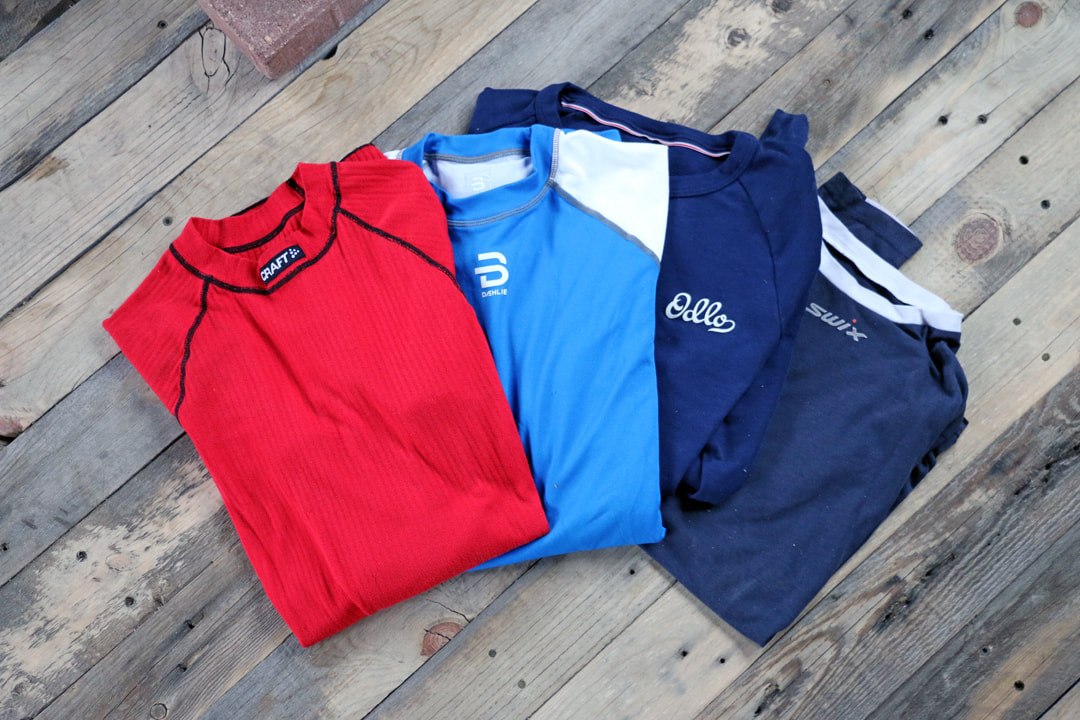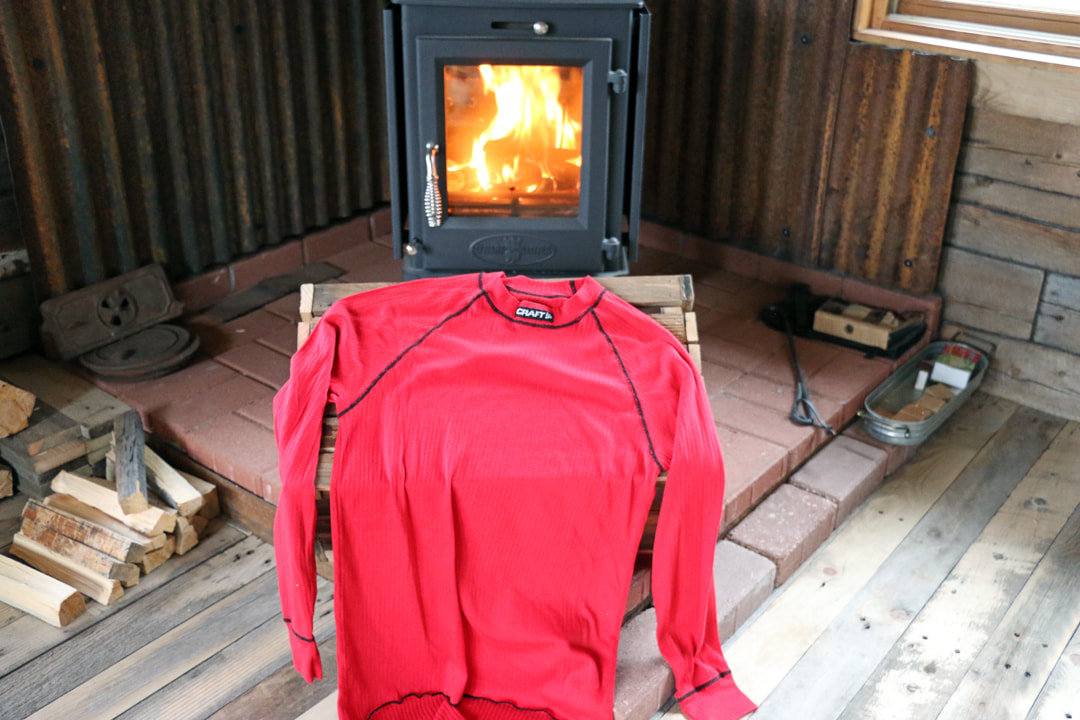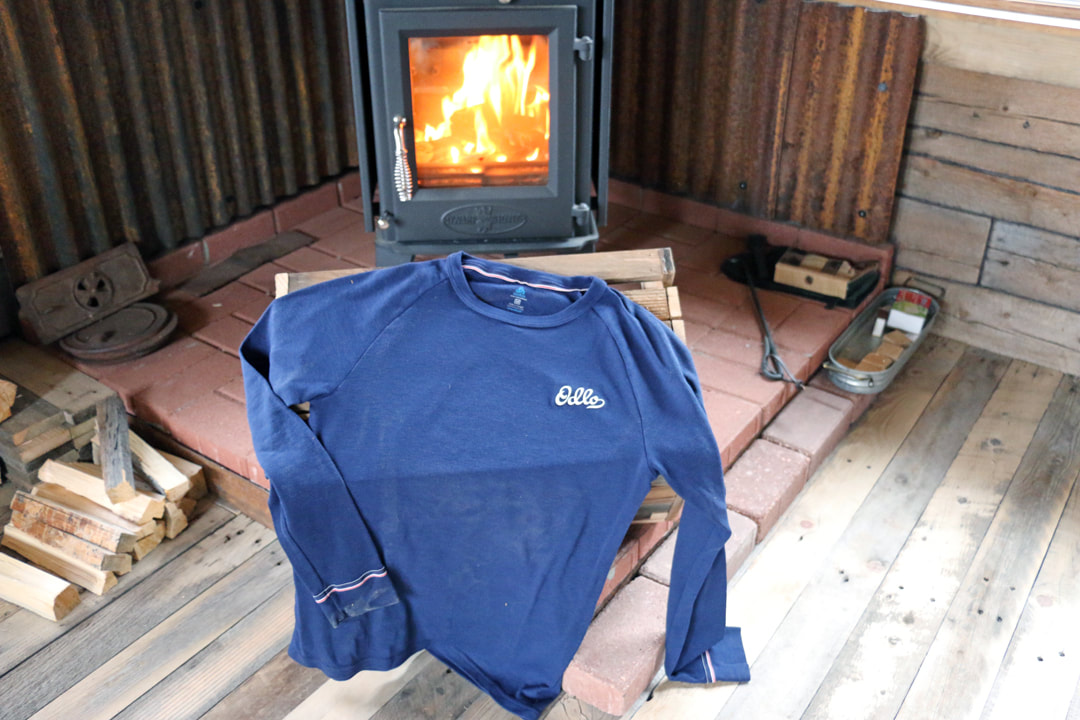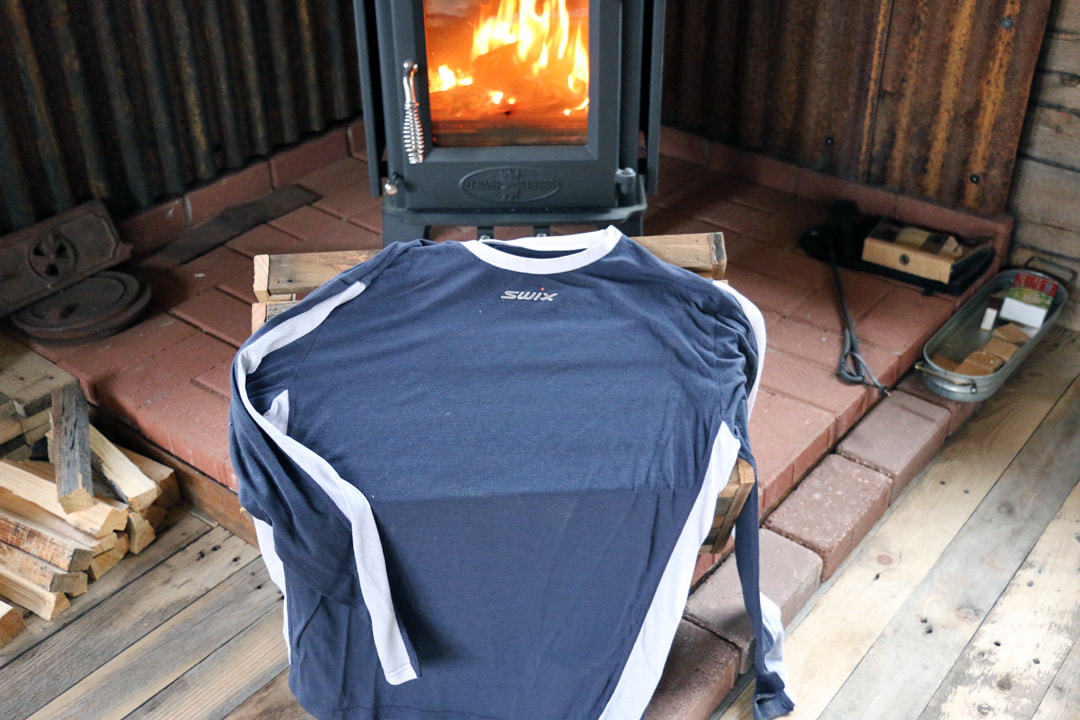|
The key to staying warm is staying dry! story and photos by Murray Selleck, HIKE ROCKY’s equipment specialist Note: these recommendations were not solicited and we receive no financial consideration from any of the manufacturers mentioned I remember a particular winter backcountry ski day like it was yesterday. Even with decades of time having passed, that single drip of sweat running down my side left an impression. We were backcountry skiing and hiking for turns when it happened. These were the early days when layering for warmth was becoming more technical with the fabrics being offered and fast becoming a widely adhered to concept. Of course, layering for warmth has long been an acknowledged practice. Think Shakelton and the Endurance. Think Charlie Brown on the baseball mound so thickly layered up he can barely move! The reason why I remember this specific backcountry ski day so well is realizing my next to skin wicking layer was certainly not wicking, far from it. Ideally, the layering concept is designed to allow the sweat and perspiration you generate while skiing or snowshoeing or any high aerobic activity to wick off your skin and pass through your insulation layer. Layering correctly will prevent you from overheating while keeping you warm and dry. On that particular winter day, with sweat sending shivers up my back, was a huge fail. Since then, through lots of trial and error, I wear a layering system that works really well for myself. However, it goes without saying that what works and feels comfortable for one person doesn't mean it will be equally effective or comfortable for the next. But here are a few ideas to keep in mind as you dress for your next hike, winter ski, or snowshoe day in Rocky Mountain National Park. The key to staying warm in winter is to stay dry. This means your next-to-skin layer is truly the most essential. It must wick the moisture off your skin. This layer should also be quick drying. It shouldn't stay damp against your skin. If this first layer does stay damp you will have to use even more energy to stay warm. As soon as you pause for a break to catch your breath or take a drink of water you'll start to chill down. Your break will be short lived because you'll have to quickly get moving again to regenerate more heat to overcome your chill. A frustrating repetition of sweat, chill, warm up, sweat, chill, warm up will repeat itself all day long. This first layer, the next to skin base layer, is critical to keeping yourself dry, warm, and comfortable even in the most extreme temperatures. The best way to ensure that your next to skin layer works properly is to have it form-fitting to your body. Some manufacturers call this body mapping. The layer shouldn't be loose, baggy, or floppy anywhere on your torso or legs. Body mapping tops typically have specific areas within the design to vent more heat or be purposefully even more snug fitting than the rest of the garment. This was the biggest lesson I learned during that winter ski day way back when. How was my base layer supposed to wick when it wasn't even touching my upper body in all places? Once I began wearing body hugging, snug, form fitting tops and bottoms did the wicking performance actually begin to work effectively. This snug body hugging-fit may feel pretty foreign to lots of first time users. However, once you get use to the feel you'll never go back. Think of the next to skin layer's sole purpose as transporting moisture off your skin or wicking. This is what will keep you dry... and comfortable. Don't think of this layer as an insulating layer. The most effective wicking layers I have found are also incredibly thin as well as body hugging. Since they are thin that also makes them very quick drying. During a ski or snowshoe break this layer is drying equally as quick as it is wicking moving all that underneath “micro climate” generated moisture away from my skin. I can enjoy a satisfying drink of water and snack without feeling rushed or compromised by the cold temperatures. Here are a few of the next-to-skin tops and leggings I have found to be really effective. I use one or another pretty much every winter day Nordic skiing or snowshoeing. Craft Active Extreme X (Sweden) Craft was the first top with a body snug fit that I ever wore. It was my game changer. The Active Extreme Top is made with 100% recycled polyester, much of it from old fishing nets. Mesh inserts under the arms to promote ventilation, flat lock seams and stretchable material for easy mobility, waffle knit design for enhanced wicking... these are the things that make up a wonderful next-to- skin layer. By the way, that first Craft top I wore many moons ago? I still have it and wear it on certain trips which speaks to the durability, performance, and longevity of Craft products. Bjorn Daehlie Compete-Tech (Norway) For those who may not know, Bjorn Daehle, is the most successful male cross-country skier in history. He and his clothing company know a few things about how to stay warm and dry outside in winter. The Compete-Tech top is the thinnest top that BD produces. The lightweight fabric and snug fit will keep you dry no matter how fast you climb or how long you stay out. The fabric is made with Tencel, recycled polyester, and fine merino wool. Tencel is produced from fiber extracted from cellulose pulp from sustainable, fast growing eucalyptus trees. Ortovox Comp 120 (Germany/Switzerland) This is another very light next to skin layer. The fabric make-up is 70 % virgin wool for wicking and warmth and 30% polyamide to provide the snug body hugging fit. Ortovox uses a unique circular knitting technique which creates a practically seamless garment. This weave also allows Ortovox to create body mapping zones for strength and increased breathability. Ortovox uses merino wool from Tasmania for their next to skin fabrics. They also use Swiss wool for increased insulation in their midlayers and outer jackets and tops. Ortovox takes pride in knowing exactly from which farms their wool is produced ensuring quality and animal welfare. Odlo Active F-Dry Light Top (Norway) Yes, there is a theme here... Scandinavian companies offering body snug, exceptional wicking and fast drying garments. The Odlo F-Dry Light top is made with 88% recycled polyester and 12% recycled polypropylene. Odlo produces a variety of fabrics for their base layers including sheep's wool and yak wool. There are many more companies producing great next- to-skin base layers. The choices are practically endless. Swix, Smartwool, The North Face, Icebreaker, Helly Hansen, and on and on... The trick is to find a company you believe in. One that you can support both with your dollars, trust, and recommendations. The great debate over next-to-skin fabrics that is synthetic materials vs natural (primarily wool) and renewable materials, won't go away anytime soon. Everyone will develop their personal favorites. Early on my choice was always synthetics. There was no comparison when it came to synthetic materials being faster wicking and drying. Wool users countered with the fact that it is a natural and renewable resource. It doesn't pick up or retain body odor. Wool is also an excellent material at wicking. They just couldn't claim it to be faster drying or produce a body hugging fit. Durability was also an early issue. Today, much of those old arguments have disappeared. Synthetics are being manufactured with recycled materials and have added anti-microbial treatments to eliminate funk. Many of these same manufacturers who primarily produced synthetic layers have also added wool options to their product lines. And, many manufacturers producing products with wool are using core spun (synthetic fibers combined with wool fibers) fabrics to their clothing to achieve a body snug fit, enhance the drying effect, and increase the durability in high wear areas like around your shoulders because of backpack straps. The choice between synthetic or wool as your next-to- skin layers will always come down to a person's perceived comfort, performance expectations, and metabolism (which in of itself is another whole discussion). The one constant remains... to stay warm in the winter backcountry you have to stay dry! 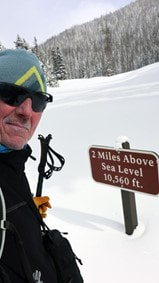 Murray Selleck moved to Colorado in 1978. In the early 1980s he split his time working winters in a ski shop in Steamboat Springs and summers guiding on the Arkansas River. His career in the specialty outdoor industry has continued for more than 30 years. Needless to say, he has witnessed decades of change in outdoor equipment and clothing. Steamboat Springs continues to be home.
1 Comment
12/4/2024 08:55:50 pm
How does the evolution of technical fabrics contribute to both comfort and performance during backcountry skiing and hiking? Visit us <a href="https://mm.telkomuniversity.ac.id">Magister Manajemen</a>
Reply
Leave a Reply. |
Categories
All
|
© Copyright 2025 Barefoot Publications, All Rights Reserved


